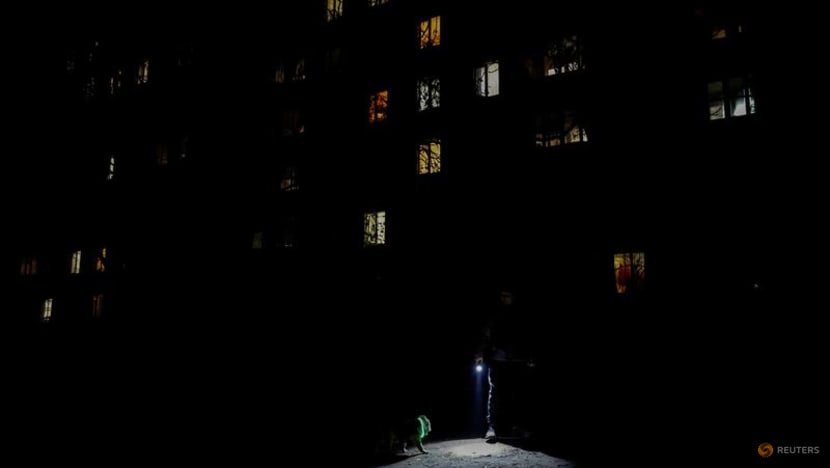Commentary: After nearly 3 years of fighting, the war in Ukraine looks headed towards an endgame
After nearly three years of war, actual peace talks and a ceasefire are more likely than ever, but this could turn out to be only a temporary relief for Ukraine, says international security expert Stefan Wolff.

Composite photo (left to right) of Ukraine President Volodymyr Zelenskyy (AP Photo/Evgeniy Maloletka), US president-elect Donald Trump (AP Photo/Alex Brandon), Russian President Vladimir Putin (Gavriil Grigorov, Sputnik, Kremlin Pool Photo via AP)

This audio is generated by an AI tool.
BIRMINGHAM: All signs now indicate that the Ukraine war is reaching a significant turning point. Ukraine President Volodymyr Zelenskyy has shifted his stance on what he might accept for Russia to end its invasion in an unprecedented and dramatic way.
He is now open to ending the war diplomatically, signalling that he would be prepared to accept ceasefire terms that do not involve an immediate return of all territory seized by Russia since 2014 as a condition. Just two months ago in October, he pitched an ambitious victory plan to key allies, premised on more Western military support, using long-range missiles against targets deep inside Russia, and an invitation to join the North Atlantic Treaty Organization (NATO).
The most obvious factor accounting for this new approach is, of course, Donald Trump’s victory in the United States presidential elections in November, including the fact that his Republican party will also control both chambers of Congress. Trump has been clear about his intention to force Russia and Ukraine to the negotiation table to make a deal.
It is not clear that Trump will indeed succeed; and even if he does, any bargain brokered carries significant and long-term risks.
But it would be too simplistic to see Zelenskyy’s shift merely as rearguard action to limit the damage that US pressure will do.
MILITARY GAINS HAVE NOT MATERIALISED
More so than at any time since the beginning of Russia’s full-scale invasion in February 2022, Ukraine is now facing an existential struggle for survival.
News from the frontlines is grim. In the east, Russia has continued to advance and captured some 300 square kilometres in the last month alone.
In its Kursk region, with the help of increasing numbers of North Korean troops, Russia has pushed Ukrainian forces back as well. This limits the size of the “bargaining chip” Kyiv is holding ahead of future negotiations with Moscow.
When Kyiv finally succeeded in November in obtaining permission for long-range strikes with Western weapons, there was some hope this might benefit its war effort. But no tangible gains have materialised, and are unlikely to do so – not least because Trump, much to Russian President Vladimir Putin’s delight, has condemned these strikes as counterproductive escalation.
At the same time, Ukraine struggles to recruit more men for its armed forces and retain those already fighting. Zelenskyy’s refusal to lower the conscription age from 24 years to 18 years has been criticised by Western allies – and makes them more reluctant to increase their own support for Ukraine.
Some Europeans – notably Germany’s opposition leader (and frontrunner to become its next chancellor after snap elections in February 2025) Friedrich Merz and the European Union’s new foreign policy chief Kaja Kallas – still talk about helping Ukraine win on the battlefield. They are keen to avoid the impression that Putin might be rewarded for his aggression in any deal that Trump imposes. But the prevailing mood trends towards compromise and concessions.
PAVING THE WAY TO A DEAL WITH DONALD TRUMP
Zelenskyy not only has few options left but to explore a negotiated settlement, but he now also has more popular support to trade land for peace.
The humanitarian crisis has dramatically worsened. Relentless Russian attacks against Ukrainian civilian infrastructure, in particular against the already battered power grid, have turned the lives of ordinary Ukrainians into abject misery with near-constant power cuts and lack of heating. Unsurprisingly, a majority of Ukrainians now support negotiations with Russia to end the war.

Russia’s position appears to be shifting as well. The Russian foreign minister, in an interview with conservative talk show host Tucker Carlson on Dec 6, insisted that there can be no peace in Ukraine without respect for Russia’s red lines. But he also indicated that a deal with Trump might be possible.
Four days later, Putin’s foreign intelligence chief and close ally Sergei Naryshkin claimed that Moscow is close to achieving its war aims in Ukraine. This could pave the way for Russia to enter into Trump-brokered talks and ultimately claim victory at the negotiation table.
ACTUAL PEACE TALKS MIGHT START
Taken together, all of this suggests that the endgame in the war might be approaching – at least in the sense that actual negotiations might start and achieve perhaps a ceasefire before the war’s three-year milestone in February 2025.
A longer-term peace agreement, however, still faces significant obstacles.
Ukraine is likely to have to accept the de facto loss of one-fifth of its territory. This will be a hard truth to accept given the sacrifices that the country has made and the suffering its people have endured.
It may still be possible for Ukraine and its Western allies to avoid formally recognising Russia’s landgrab. But the idea that once the frontlines are frozen any land can be retaken by Ukraine in subsequent negotiations, let alone by military means, is wishful thinking in light of the current balance of power between Moscow and Kyiv.
And then there is the longstanding question: How would any deal be monitored and enforced, in the absence of Ukrainian NATO membership and renewed doubts over the feasibility of Western troops being deployed to Ukraine?
In the short-term, the start of negotiations and a ceasefire are more likely than at any time since the talks between Kyiv and Moscow in the early months of the Russian aggression. But now, as was the case then, the exact contours of what a sustainable deal could look like are still unclear.
And herein lies the danger that whatever is achieved now will only provide temporary relief for Ukraine’s people – and an opportunity for the warring parties to regroup, rearm, and prepare for the next round.
Stefan Wolff is Professor of International Security at the University of Birmingham and Head of the Department of Political Science and International Studies.













